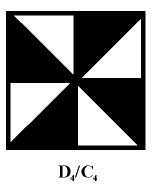From a post that was written for Twelfth Night—
Bernhard Weiss on the philosophy of Michael Dummett—
" … debates about realism, that is, those debates that ask
whether or not one or another aspect of the world is independent
of the way we represent that aspect to ourselves. For example,
is there a realm of mathematical entities that exists fully formed
independently of our mathematical activity? Are there facts about
the past that our use of the past tense aims to capture?"
Yes and Yes.
-
In memory of Anne Tyng, who died last year on Dec. 27,
see Number and Form. -
In memory of Frederica Sagor Maas, who
died on Twelfth Night, 2012, see Dogma. -
In memory of time I spent on Wilcox Avenue
in the Hollywood of the early sixties, see
Hans Reichenbach on the use of the past tense
(section 51 of Elements of Symbolic Logic ,
New York: The Macmillan Company, 1947, 287–98.)
See also The Whirligig of Time in this journal.
















